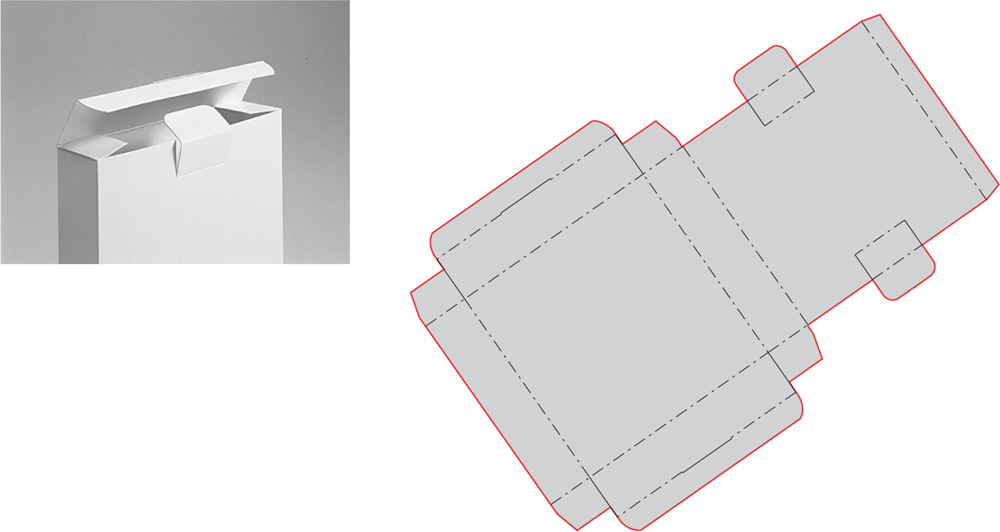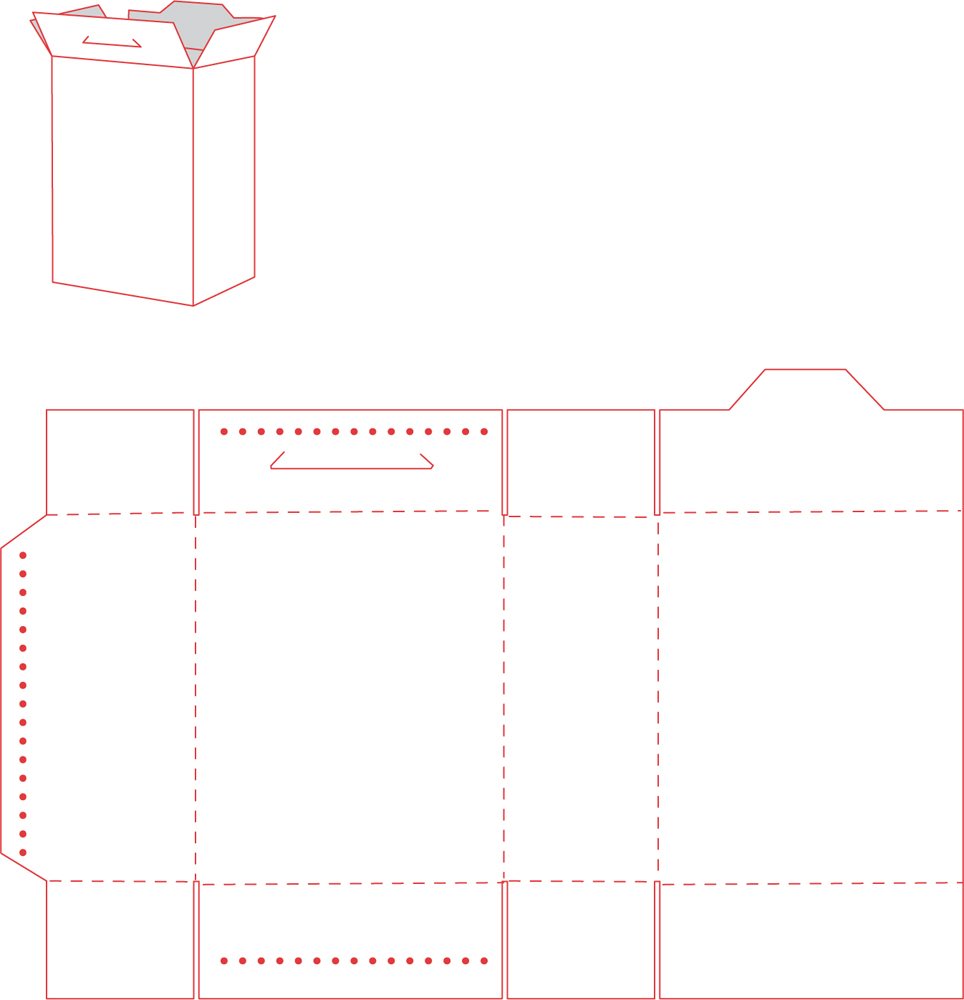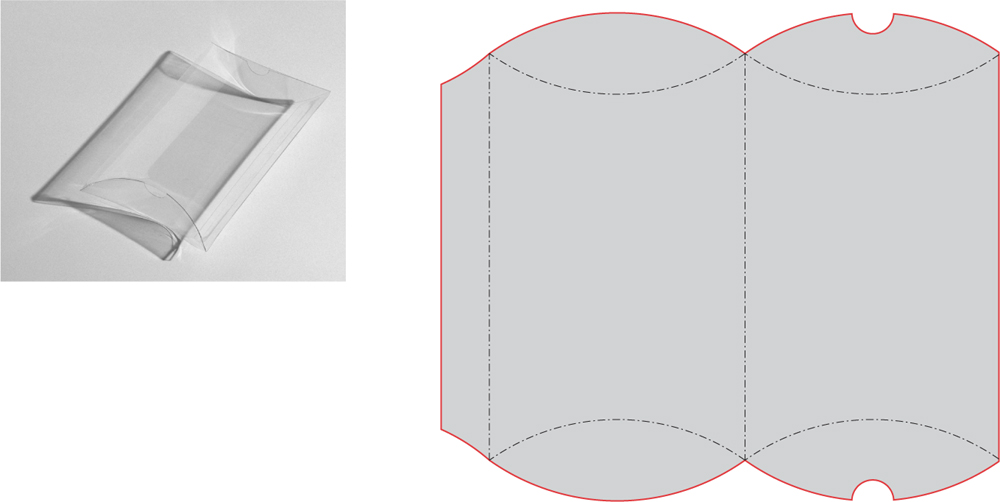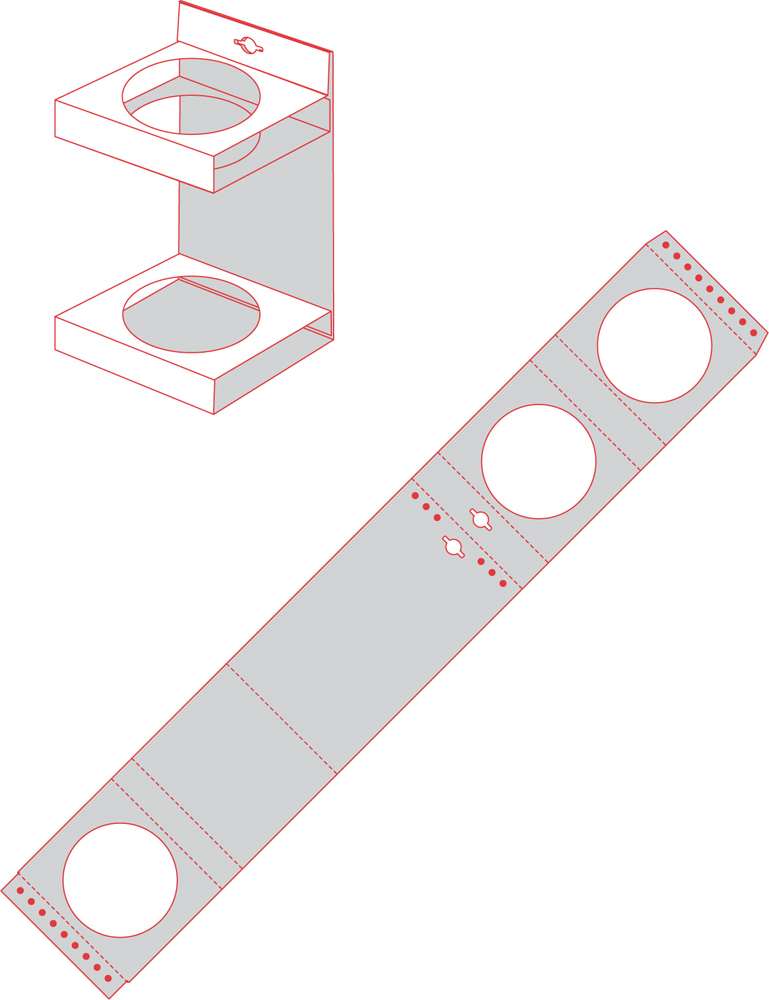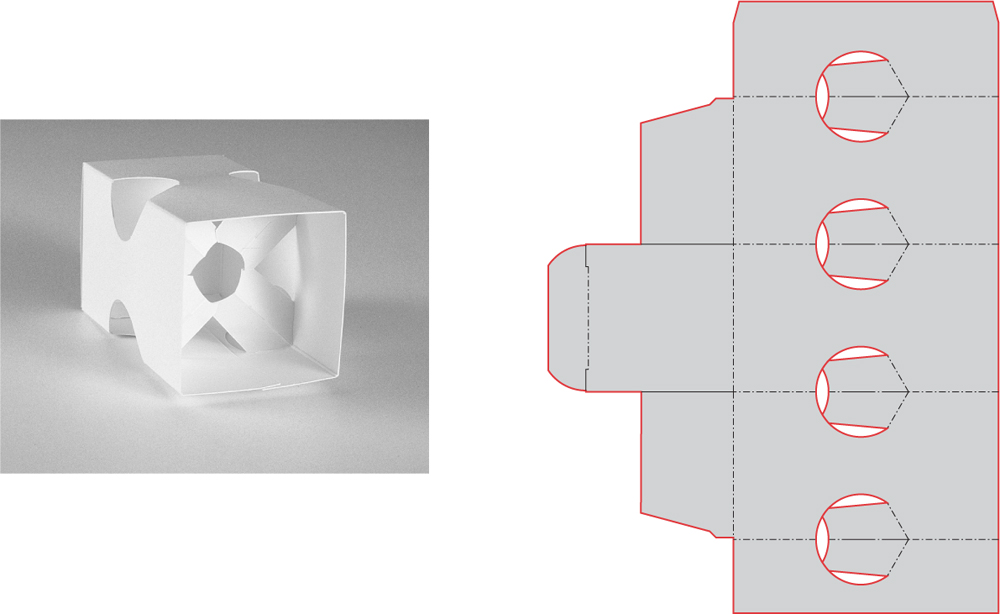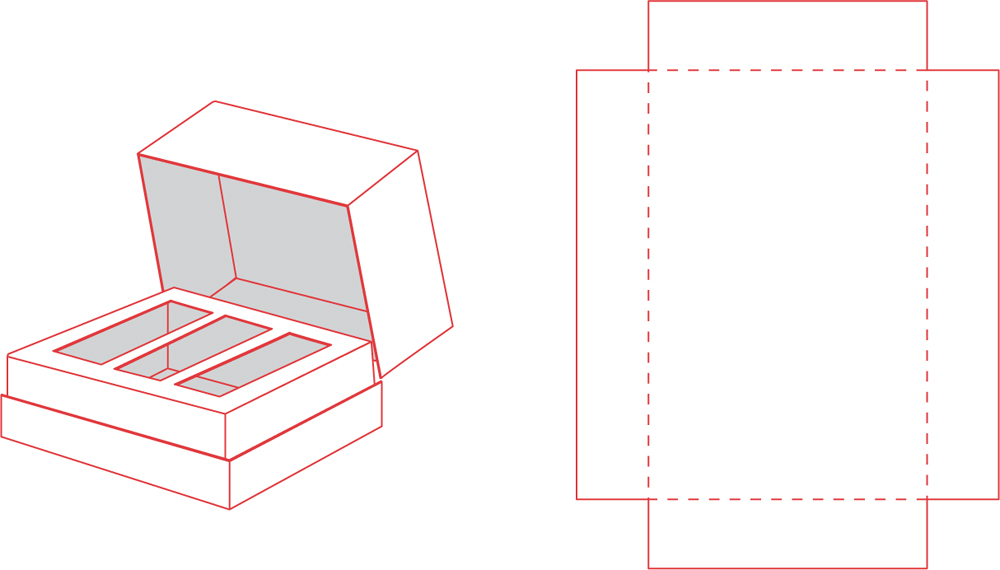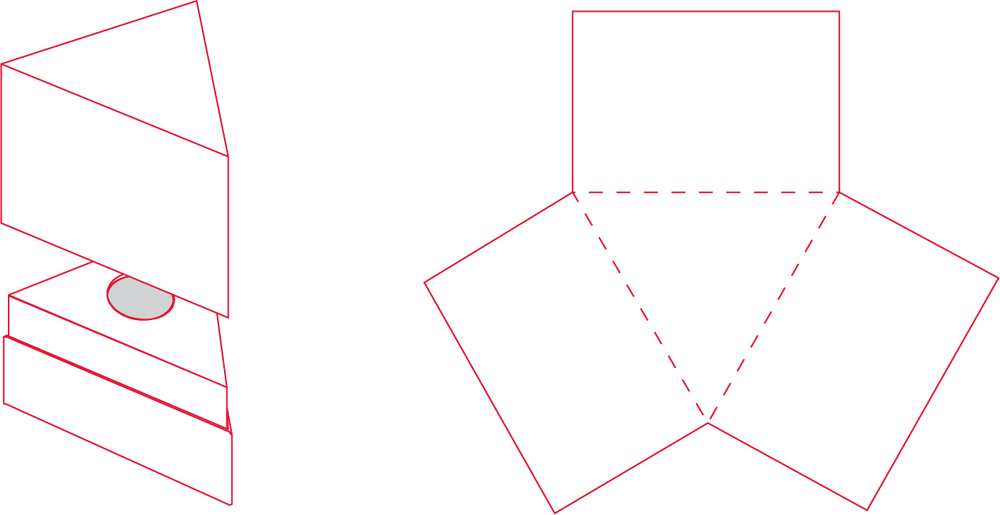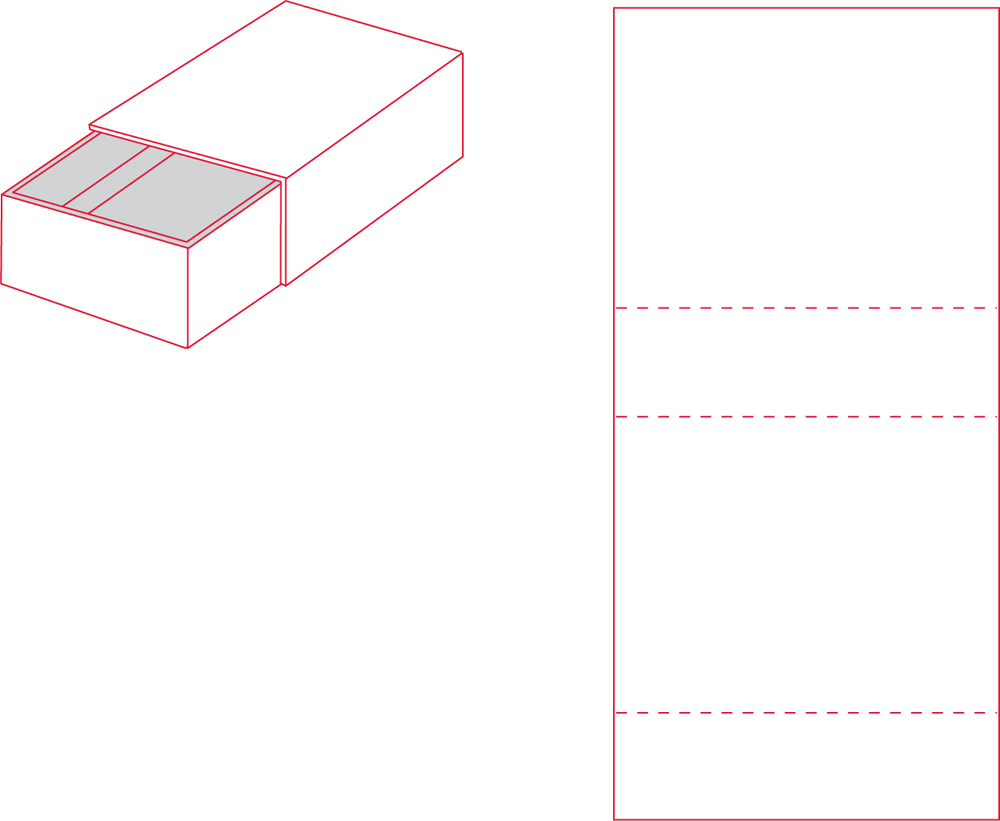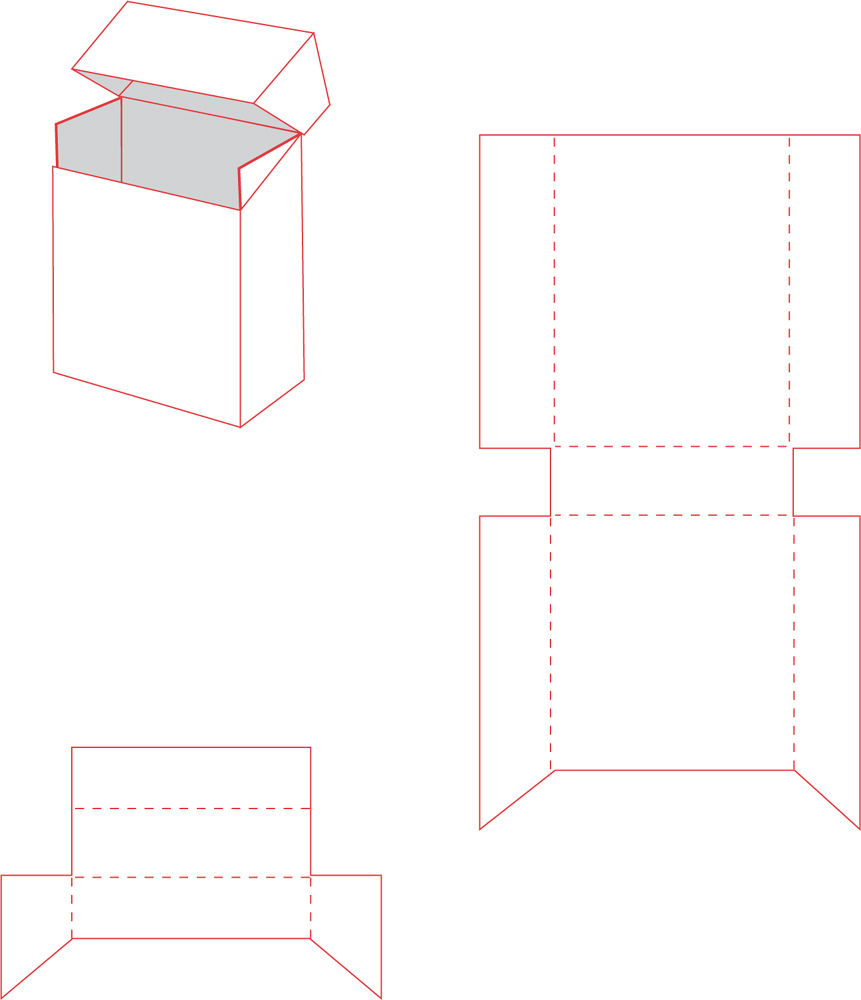Chapter 10: Packaging Styles
TRAY-STYLE CARTONS
A basic type of folding carton is the tray, a relatively shallow carton with a bottom hinged to a wide side and end walls. The sides and ends are connected by a flap, hook, locking tab, or lock that can be glued or assembled without glue. Tray cartons can also consist of two pieces, one slightly larger than the other, forming the base and cover of a two-piece telescoping box. Trays are often used for baked goods, cigarettes, for food service items, and as pizza carryout containers.
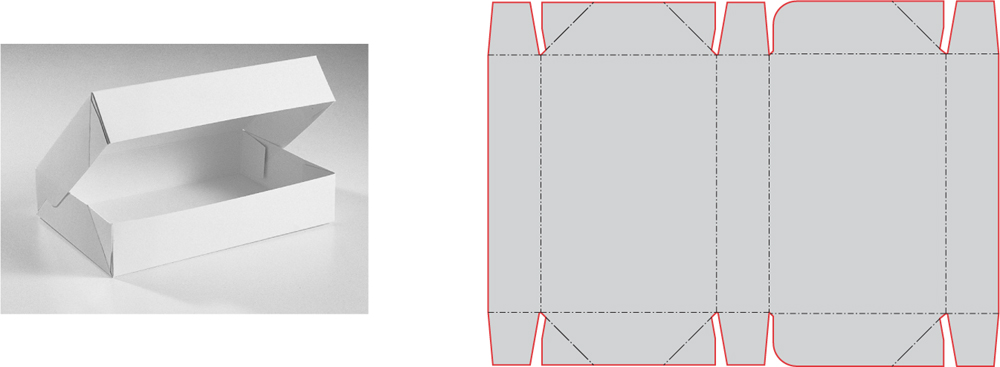
Six-Point Glued Tray with Integral Lid
Preglued corners provide extra strength and ease of assembly. Structure is erected by pulling out the sides of the tray. Because it stores flat and is easily opened, this type of container works well in the fast-food industry.
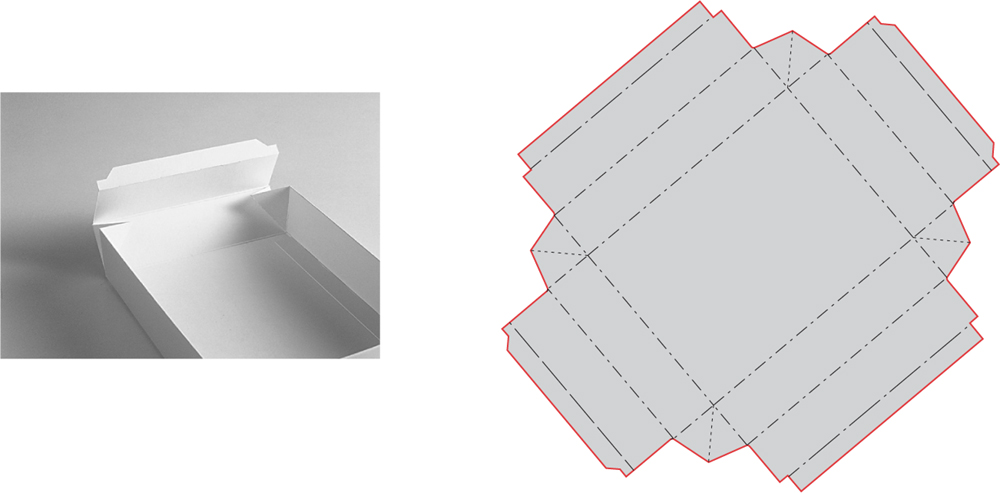
Web Corner Tray
Easy-erect tray cartons assemble without glue. The diagonal fold across each corner creates a web that’s held in place by flaps. An appropriate alternative in situations when gluing isn’t an option.
Corner-Locked Tray
Another option when gluing isn’t available is tongue-and-slot corners that are used to form sides. This option is not as rigid as the web corner tray, however, it uses less material. This style can be made into a container with a lid by using one tray as the base and a slightly larger one for the lid.

Open-Ended Tray
Glue-assembled trays are frequently used for baked goods and other food items when display of product is important. Product is protected with shrink-wrap, cellophane, or other transparent wrapping.
In-Fold/Out-Fold Tray
Glue-cornered trays store flat and then self-erect when the sides are lifted. They can be shrink-wrapped when display of product is important. They can also be formed into a container with a lid by using one tray as the base and a slightly larger one for the lid in a combination often used for gift boxes.
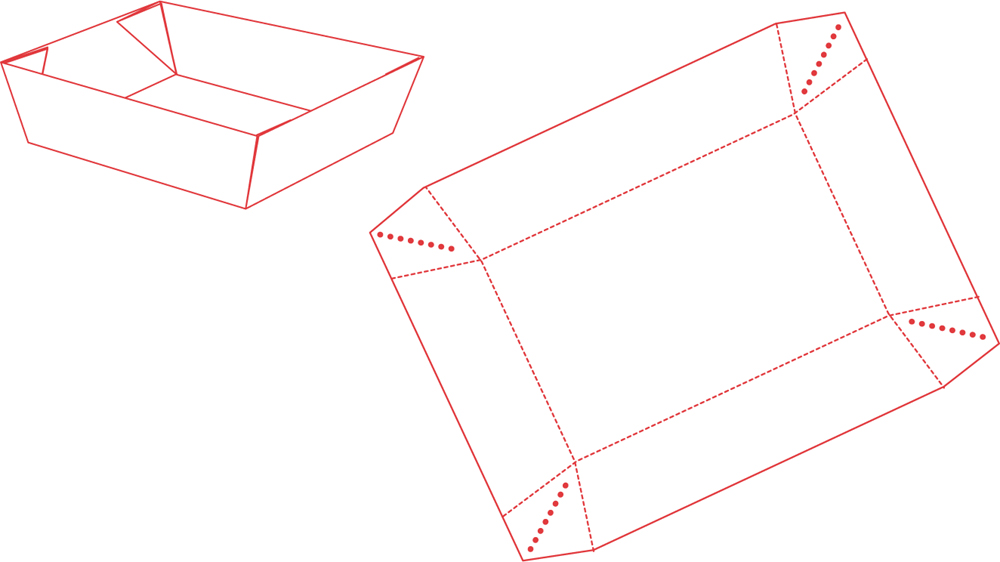
Glue-Cornered Taper Tray
Preassembled and glued trays stack well and can function equally well as a plate or dish. they are frequently used in the food service industry for serving french fries, salads, and other nonliquid products.
BASIC TUBE-STYLE CARTONS
Tube-style folding cartons are rectangular sleeves formed from a sheet of board that is folded over and glued against its edges. Tubes have openings at the top and bottom that are closed with flaps, reverse, or straight tucks and locks that can be glued or assembled without glue.

Skillet or Sealed End Carton
Flaps are sealed using glue or tape. Most shipping cartons use this configuration and closure because it provides the most economical use of carton board.
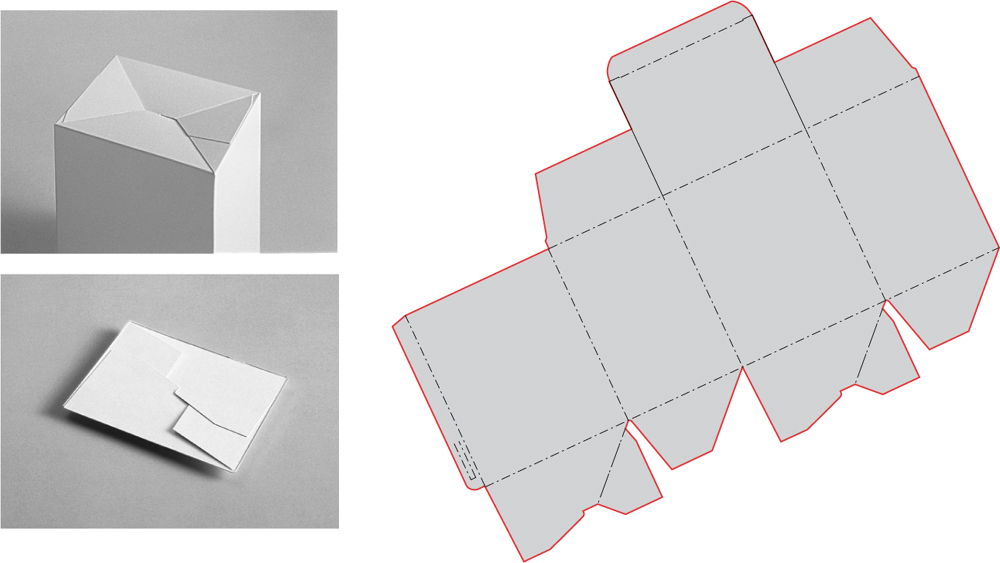
Tuck-Top Crash Base Carton
Used when fast assembly of the carton is important. Cartons are preglued and folded flat. When opened for assembly, the base slides into position and locks when all sides meet.
BASIC CLOSURE TYPES
In addition to providing a temporary barrier between the package’s contents and the outside, the closure can also contribute to the rigidity of the carton. The closure may also determine or transform the purpose of a carton.
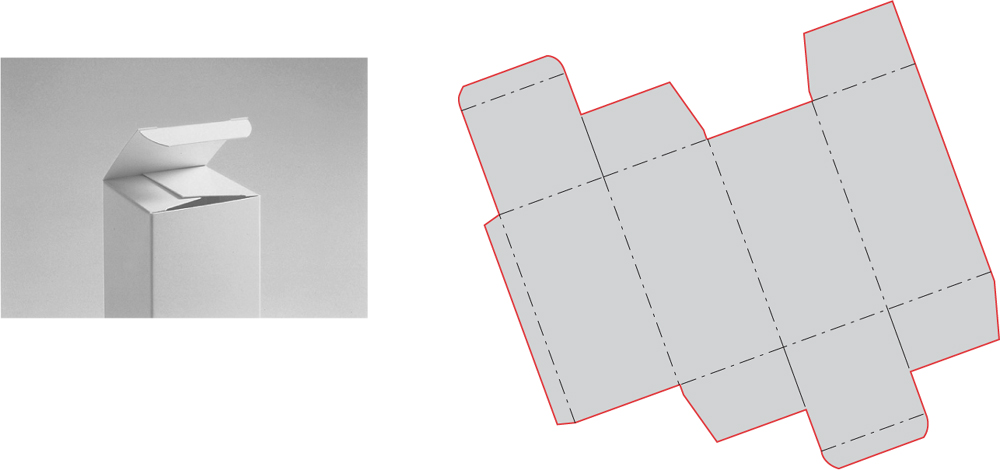
Standard Tuck-Flap
Appropriate for individually wrapped items such as bandages or products in squeezable tubes. Also a good choice as a container for food items such as tea and sugar packets where reusability is important. May require a seal or outer wrapping to ensure contents will remain intact prior to purchase.
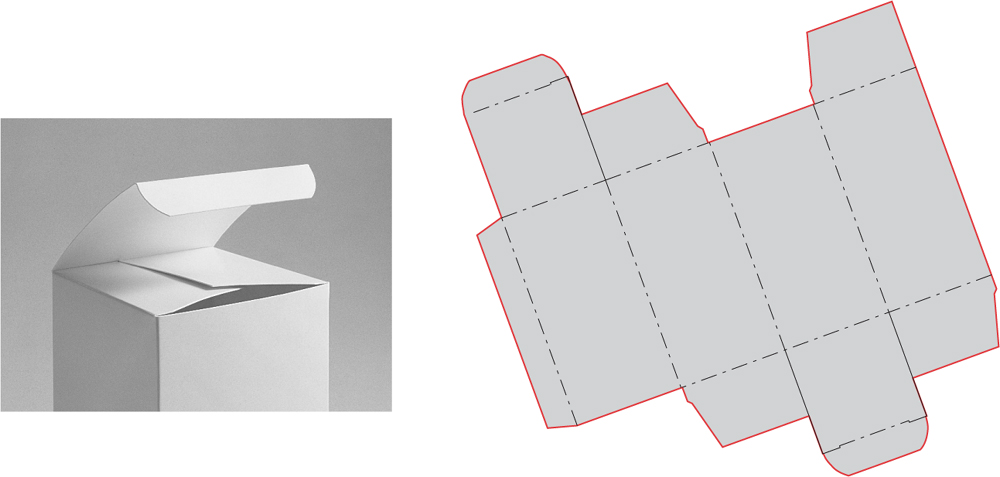
Slit-Lock Tuck
Applications are similar to standard tuck-flap carton, except slits provide a more secure seal. For tamper resistance, add a seal or a protective outer wrapping.
Tab Lock
Slits and tab provide additional protection against tampering and lid being forced open by inside pressure from the contents.

Postal Lock
Although not reusable, this completely tamperproof option has an arrowhead tab that tears on opening, providing proof of entry.
Partial Overlap Seal End with Lock Tab and Lock Slot
This closure option is appropriate for items contained in an interior, moistureproof pouch including cereal, cookies, or crackers. The top is often glued shut to prevent tampering prior to purchase, leaving the tab and slot as a reusable closure after the carton is opened.
Pull-Strip or Zipper Carton
Commonly used to prevent tampering. The pull-strip provides an irreversible method of opening. Suitable for cereals, crackers, and other foods contained in an interior, moisture-proof pouch. Note: All flaps must be glued or have locking closures to prevent access via another entrance and to ensure pull-strip will be properly aligned.
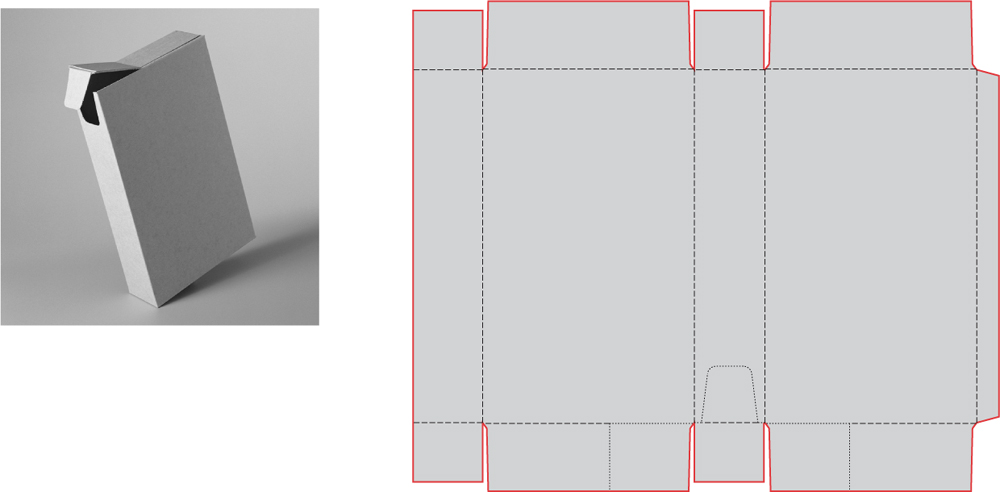
Pour-Spout Container
Score lines along the container’s top and side allow the consumer to access the product and pour the contents in a controlled manner. This type of carton is commonly used for cereal and detergent.
FOLDERS, SLEEVES, AND OTHER TYPES OF FOLDING CARTONS
These packaging options suit the needs of specialty packaging and specific products.
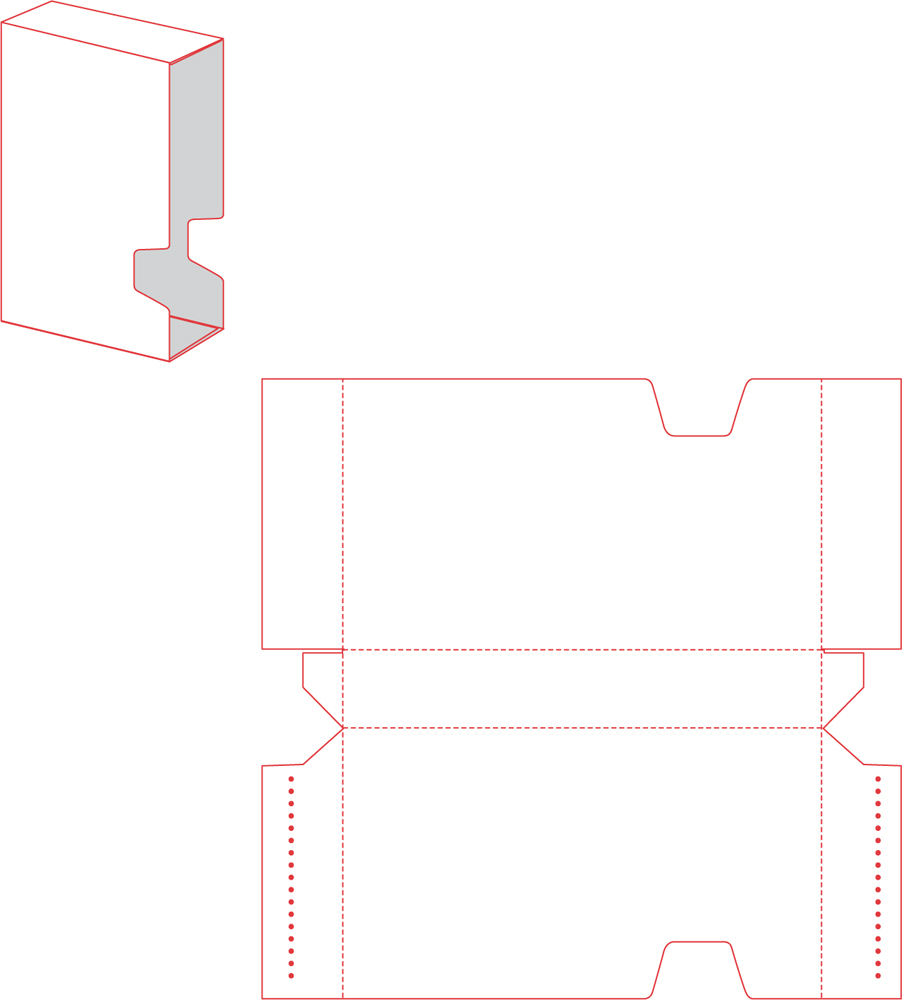
Open-End Sleeve with Finger Holes
Finger holes and open-end construction allow easy access to the object inside the sleeve.
Pillow Pack
Functions well for packaging soft items such as clothing or a number of small pieces. Easily assembled and can be stored in flat-packed state. Package design can also be easily modified to a pull-strip closure.

Shallow Folder
This type of package makes economical use of resources for packaging flat items such as hosiery. Its tuck-in closure can be sealed or replaced with a pull-strip to make the container tamper resistant.
Bottle Hanger
This one-piece construction lends itself to a variety of lightweight, cylindrical items and provides maximum product visibility.
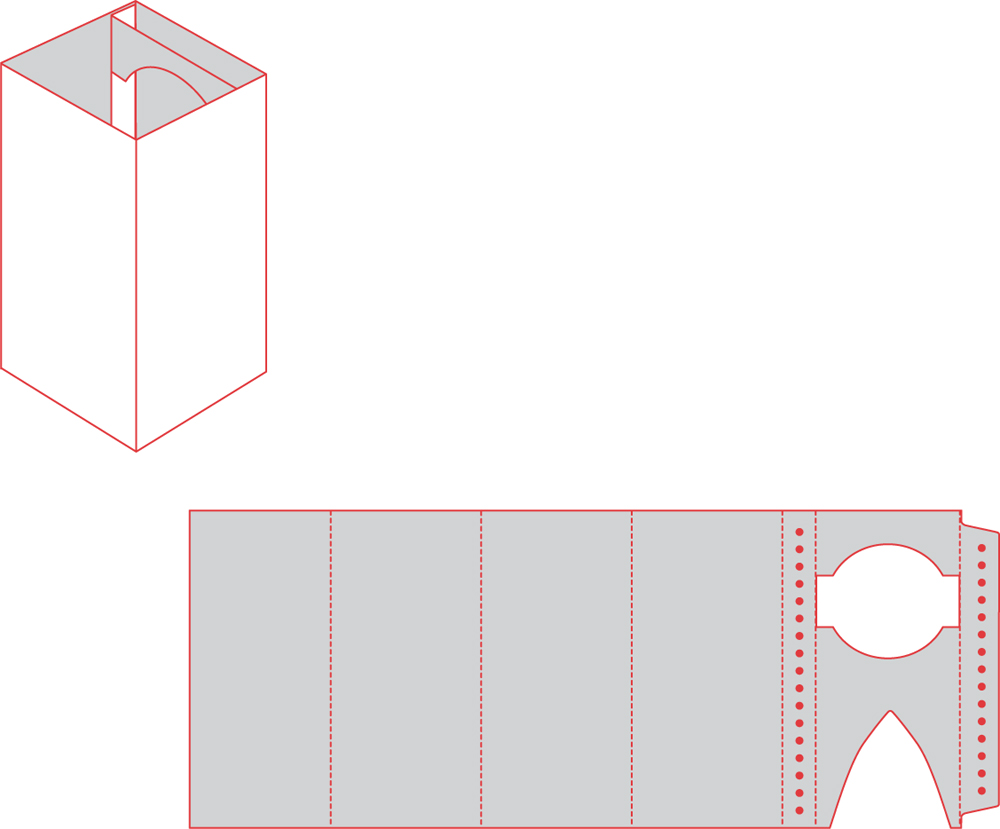
Lightbulb Sleeve
These designs use inner panels and die cuts to protect and immobilize lightbulbs. The design can be modified to suit similarly fragile products.
Display Carton
The extended lid flap on this carton opens to reveal a display recess to accommodate a product. Cut from a single sheet, this design requires only one side of the board to be printed.

Six-Sided Carton with Push-in Closure
The small triangles have been die-cut out of the top closure to permit easier closing. Assembly requires glue on the side but not on the bottom of the carton. Suitable for novelty and gift items.
SET-UP BOXES
Set-up or rigid paper boxes are assembled by piecing together flat sheets of boxboard, which are held together at the sides with corner stays and adhesive. The assembled box is covered with decorative paper that is adhered to the exterior surface. Unlike folding cartons, which are often delivered flat, set-up boxes are delivered as a three-dimensional product ready to be filled with merchandise. They can be easily adapted to a variety of applications that may include platforms, plastic domes, or compartments. Their decorative quality makes them suitable for cosmetics, candy, and jewelry. Set-up boxes instantly add an upscale look to gifts, gift boxes, and luxury items.

Basic Set-up Construction
A simple set-up box involves scoring a sheet of box board so that the sides can be folded at right angles to the base. The side panels are fastened at the corners with tape, fabric, or metal. The assembled box is covered with a precut sheet of paper that is scored at the fold lines, adhered to the outside, and wrapped around the box edges so that it covers a portion of the interior. Two trays, such as the one shown here, are typically combined to form a box and lid.

Lidded Box with Raised Platform
Boxes with raised platforms work well as a means of showcasing watches, jewelry, or other valuables. The platform openings can be replaced with slits for displaying rings or adapted in other ways, depending on the shape of the objects inside.
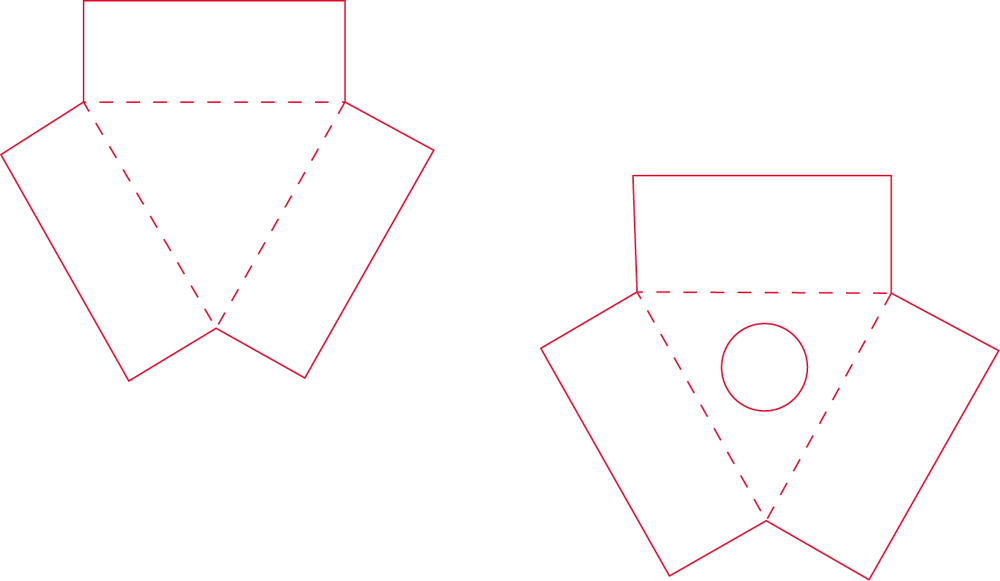
Triangular Box with Raised Platform
This alternative to the standard, four-sided box makes an unusual presentation. The deep lid makes this construction suitable for a perfume bottle or other vertical container.
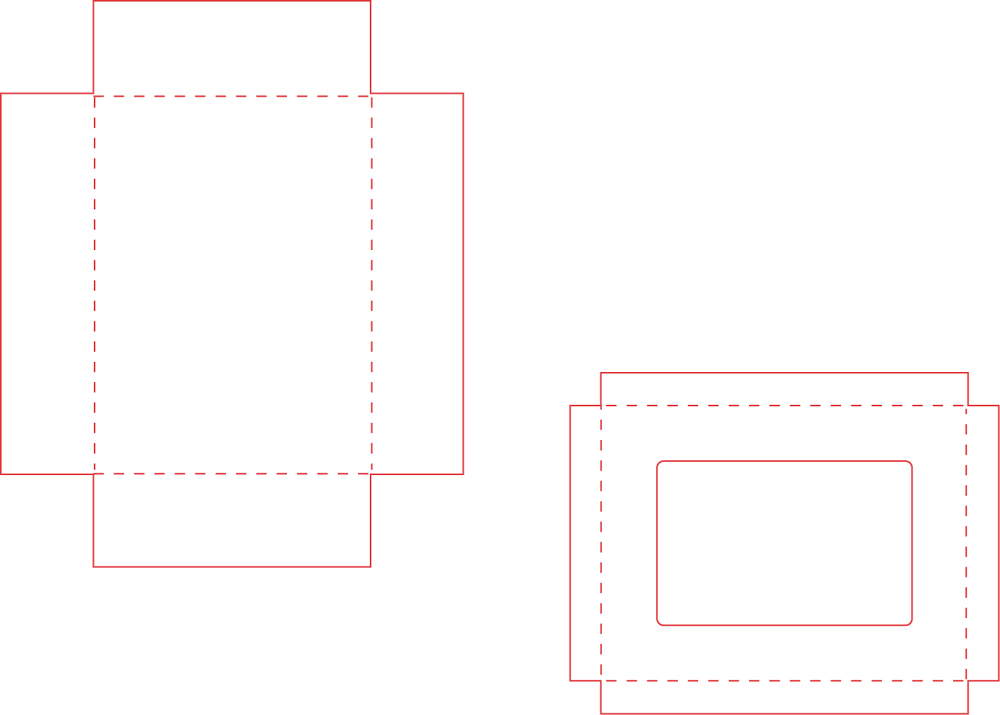
Tube and Slide
Without the platform, the tube and slide construction functions much like a matchbox as a container for loose items.
Hinged-Lid Box
The vertical nature of this box makes it an ideal container for chalk, crayons, discs, or as a document holder.
COMMON STYLES OF STOCK PLASTIC CONTAINERS
Plastic containers are generally categorized according to shape: oblong, oval, round, or square. From there, shapes vary according to function. Consult the following diagrams for an overview of some common shapes. Check with specific manufacturers for more specific information on capacity range, container materials, and barrier capabilities.
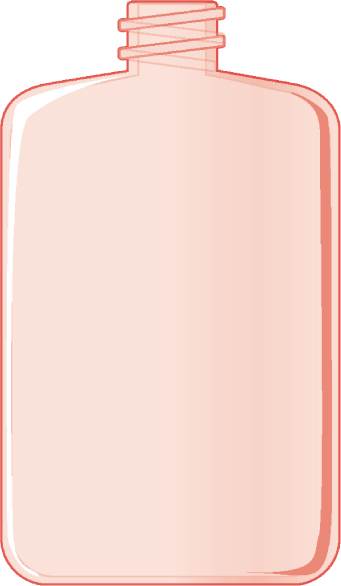
Classic Oblong
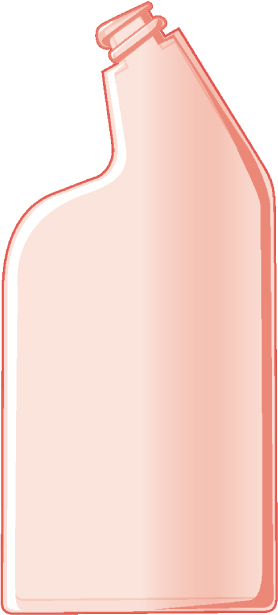
Vanity Oblong
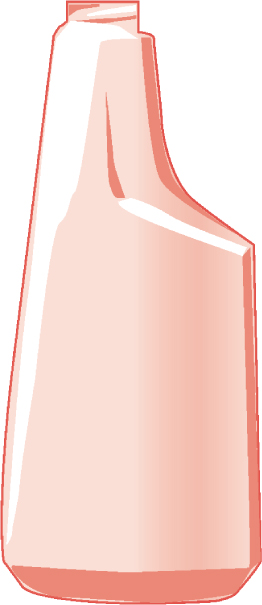
Sprayer: Oblong
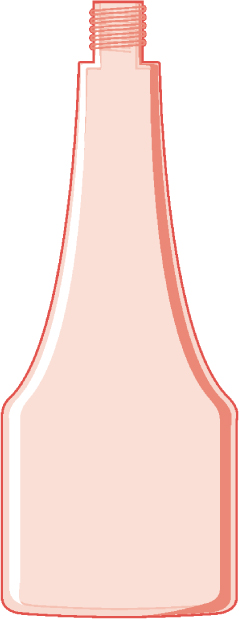
Angle Neck Oblong

Lexington Round

Regular Cylinder
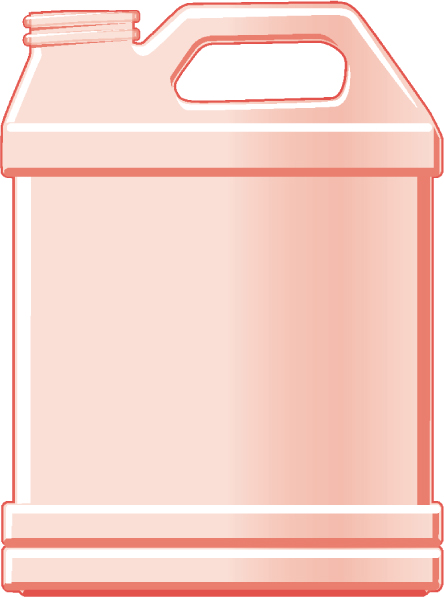
Handleware: 2-Gal. Oblong
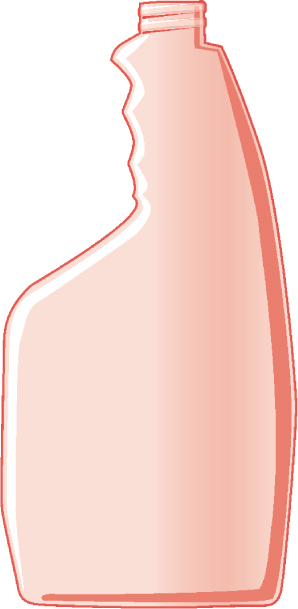
Sprayer: Pistol Grip
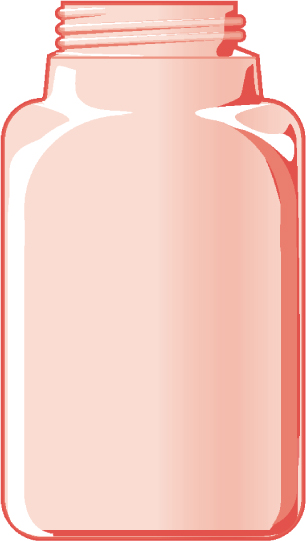
Wide-Mouth Oblong
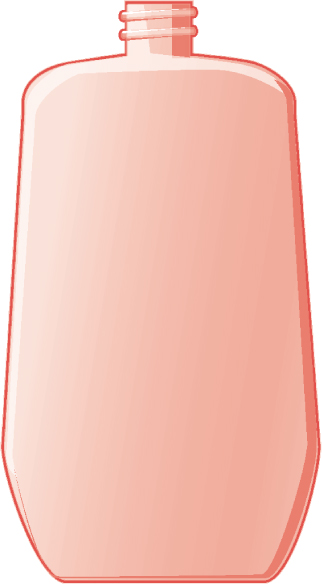
Syrup Oval

Tapered Oval

Boston Round
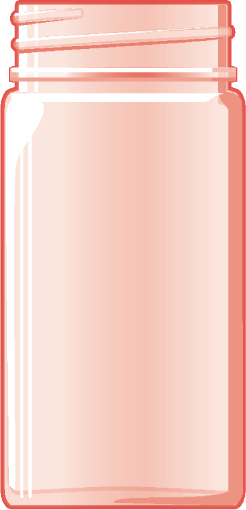
Wide-Mouth Square

Carafe: Modern
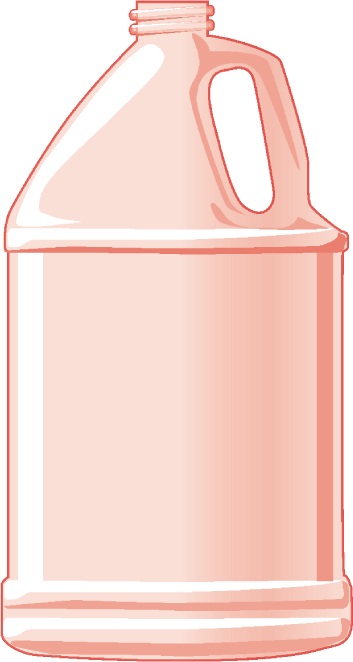
Handleware: 1-Gal. (3.79 L) Round
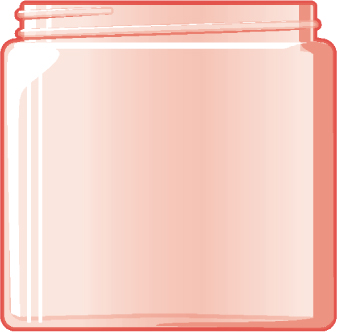
Jar: Wide-Mouth Round
PAPER BAGS
Paper bags are constructed from a continuous web of paper that is formed into a tube and glued along the overlap to form a seam. The tube is torn to a specified length, frequently against a serrated bar, which gives the bag a saw-toothed edge. The end is folded over and glued to form the bottom. There are three general styles of bag construction: flat, square or pinch bottom, and automatic bottom or self-opening style (SOS).

Flat bags are inexpensive to produce and make economical use of materials. They work well for containing flat items such as cookies or greeting cards.

Square or pinch bottom bags can accommodate bulkier items and work well as shopping bags for single purchases of garments and other lightweight merchandise.
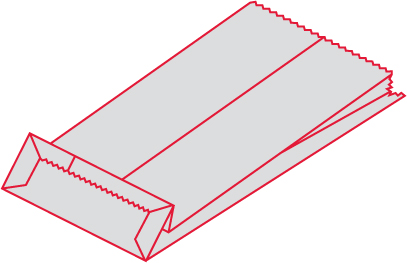
Automatic bottom or self-opening style bags are constructed with a more rigid bottom and are often made of kraft paper to serve as grocery bags or with attached handles to serve as shopping bags.
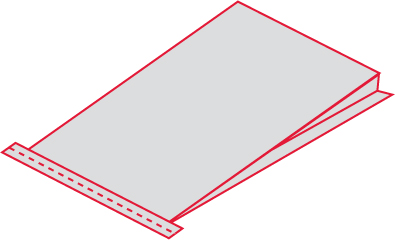
Other styles of bag construction include sewn open-mouth (left) and satchel (right).
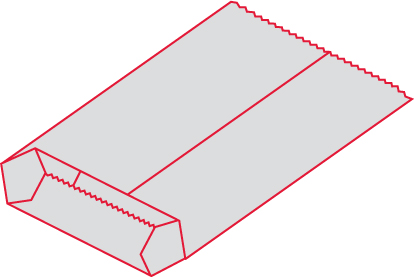
When planning bag construction, dimensions should be specified as face, width (or gusset), and length. Note that length is measured differently for a square (pinch bottom) bag and for a self-opening bag. The length of the tube before it is formed into a bag is sometimes given, and this should not be confused with the finished length (the finishing process reduces the tube length).
PLASTIC BAGS
Plastic bags are manufactured from plastic tubing or from a flat web that is folded and joined at a back seam. The ends are generally heat sealed to complete the closure.
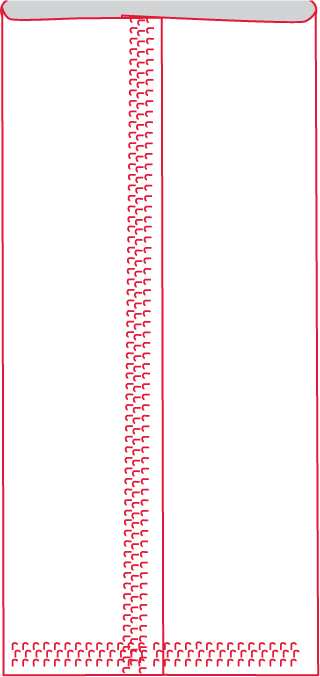
Back Seam Flat
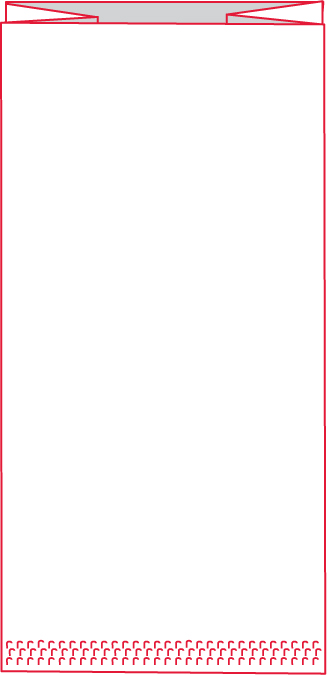
Tubular Gusseted
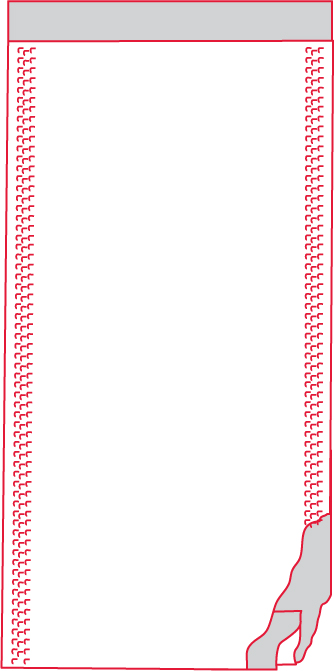
Bottom Gusset

Inside Flap
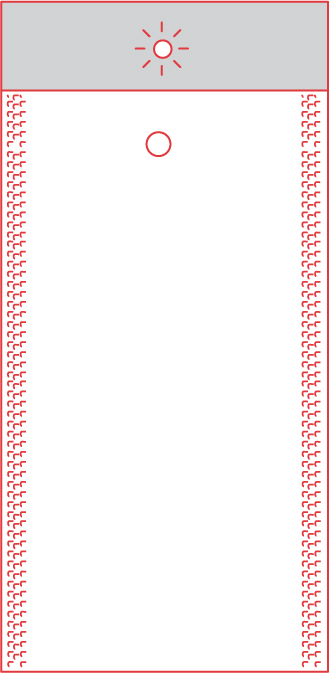
Snap Fastener
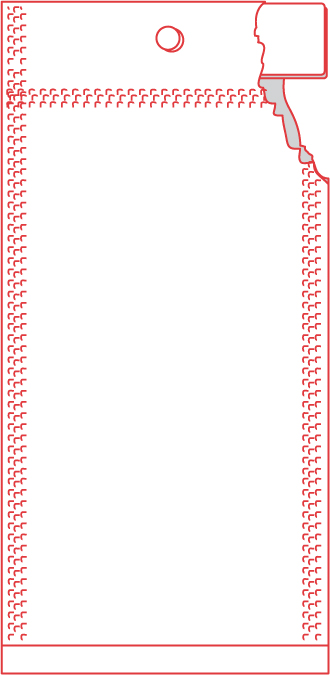
Board Header

Carrier
Plastic bags can be manufactured as flat or gusseted and include a variety of styles and closures.



